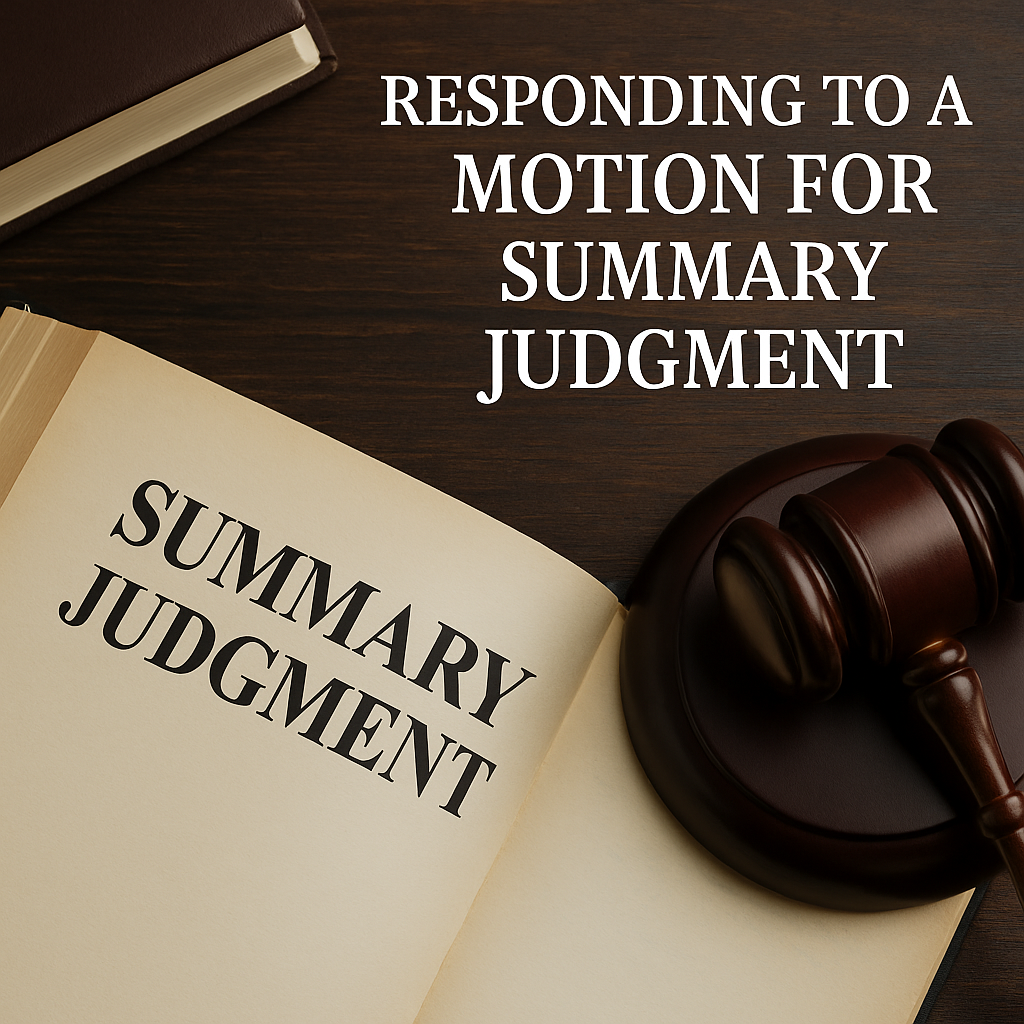
When facing a motion for summary judgment—whether traditional or no-evidence—a well-crafted and timely response can make the difference between preserving your client’s claims and losing them outright. Texas courts take summary judgment practice seriously, and procedural missteps can be fatal. Below is a practical guide to understanding and responding to these motions effectively.
1. Understanding the Two Types of Summary Judgment Motions
Under Rule 166a of the Texas Rules of Civil Procedure, there are two distinct types of summary judgment motions:
- Traditional Summary Judgment (Rule 166a(c))
The movant must conclusively prove that no genuine issue of material fact exists and that they are entitled to judgment as a matter of law. The burden then shifts to the nonmovant to raise a fact issue through competent summary judgment evidence. - No-Evidence Summary Judgment (Rule 166a(i))
The movant asserts that there is no evidence to support one or more essential elements of the opposing party’s claim or defense. The burden immediately shifts to the nonmovant to produce evidence raising a genuine issue of material fact on those challenged elements.
Understanding which type of motion has been filed is critical, because the response requirements differ.
2. Timing Is Everything
A response to a motion for summary judgment must be filed and served at least seven days before the hearing date, unless the court grants leave for a late filing. (Tex. R. Civ. P. 166a(c)).
Miss this deadline, and the court may disregard your response—even if your arguments are otherwise strong. Always confirm the hearing date and work backward to calculate the filing deadline accurately.
3. Crafting an Effective Response
Your response should include both legal argument and competent summary judgment evidence.
A. Legal Argument
- Clearly identify whether the motion is traditional or no-evidence.
- Point out any procedural defects (e.g., improper notice, hearsay evidence, missing exhibits, defective affidavits).
- Apply the correct legal standard:
- For traditional motions: argue that the movant has not conclusively established its right to judgment.
- For no-evidence motions: show that some evidence exists on each challenged element.
B. Summary Judgment Evidence
Evidence may include:
- Affidavits based on personal knowledge and admissible facts,
- Deposition excerpts,
- Verified pleadings (where appropriate),
- Business records, contracts, photographs, and other authenticated documents.
Affidavits must be sworn, specific, and based on personal knowledge—conclusory or speculative statements will not raise a fact issue.
4. Common Pitfalls to Avoid
- Filing late or without leave — Untimely responses are routinely disregarded.
- Relying on pleadings — Pleadings, by themselves, do not constitute summary judgment evidence.
- Failing to cite the record — Every factual assertion must be linked to competent evidence.
- Submitting defective affidavits — Ensure they comply with Rule 166a(f).
- Overlooking separate grounds — If the movant raises multiple independent grounds, you must address each one.
5. Strategic Considerations
- Motion to Continue: If discovery is incomplete, consider moving for a continuance under Rule 166a(g). You must show why additional discovery is needed and what evidence you expect to obtain.
- Sur-Reply Practice: While not automatic, courts may permit a short sur-reply to address new evidence raised in a reply.
- Oral Argument: Always be prepared to argue succinctly and direct the judge to key pieces of evidence.
6. The Bottom Line
A motion for summary judgment can end a case before trial. To preserve your client’s rights, respond timely, thoroughly, and with admissible evidence. Know which rule applies, challenge procedural and substantive defects, and create a clear record of fact disputes for the court—and, if necessary, for appeal.
Conclusion
In Texas litigation, responding to a summary judgment motion is not merely procedural—it’s strategic. Whether it’s a traditional or no-evidence motion, your response should combine sharp legal reasoning with solid evidentiary support. A disciplined, organized, and timely response keeps your case alive and positions you strongly for trial or settlement.
At David C. Barsalou, Attorney at Law, PLLC, we help clients navigate business, family, tax, estate planning, and real estate matters ranging from document drafting to litigation with clarity and confidence. If you’d like guidance on your situation, schedule a consultation today. Call us at (713) 397-4678, email barsalou.law@gmail.com, or reach us through our Contact Page. We’re here to help you take the next step.